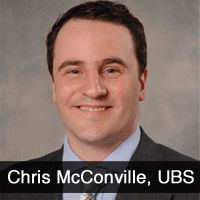
The UK’s National Physical Laboratory has signed up UBS for NPLTime, a new service providing the precise time signal required under MIFID II, and expects more financial firms to sign up before the new regulations come into force in 2018.
NPL operates two atomic clocks which are accurate to one second every 158 million years, and is developing the next generation of optical atomic clocks which will be accurate to one second in 14 billion years. NPLTime provides a precise time signal directly traceable to Coordinated Universal Time (UTC) which is independent of GPS and complies with the MiFID II timing traceability requirement.
GreySpark Partners, a capital markets consultancy, said in a report last month that MiFID II’s clock synchronisation rules create a new EU-wide environment in which trading venues and their members have to synchronise their internal clocks to UTC, an internationally recognised scientific standard for timekeeping that does not require time zone or daylight saving adjustments.
Last week NPL said in it has signed an agreement with UBS and TMX Atrium, an infrastructure provider, to provide NPLTime. NPL declined to comment on whether UBS is the first bank to agree to use NPL Time but a spokeswoman told Markets Media that other firms are expected to sign up before MiFID II goes live. She said: “We expect deployment of the solution across the industry where resilient and accurate timing is required.”
 Chris McConville, global co-head of equity electronic agency trading at UBS, said in a statement: “The NPLTime solution will provide UBS infrastructure with a stable, accurate and resilient time signal, whilst simplifying the MiFID II time synchronisation traceability requirements.”
Chris McConville, global co-head of equity electronic agency trading at UBS, said in a statement: “The NPLTime solution will provide UBS infrastructure with a stable, accurate and resilient time signal, whilst simplifying the MiFID II time synchronisation traceability requirements.”
As NPLTime is not dependent on GPS, susceptibility to jamming, spoofing, urban canyon effects and space weather is removed. In addition, the costs associated with managing a complex assortment of timing devices and the need to access roof space to locate GPS antennas are decreased.
Eric Sinclair, president of TMX Market Insights and group head of information services of TMX Group, said in a statement: “The global demand for higher degrees of timestamp accuracy continues to grow. NPLTime removes the need for time synchronisation between various locations, and will better equip our clients with the ability to comply with regulatory obligations around the world.”
A trial of the NPLTime service was conducted at a UBS facility in a data centre and found to achieve approximately 100 nanosecond synchronisation to UTC.
Under MiFID II banks must also be able to provide European regulators with the specifications used to meet the accuracy standard levels on granularity and maximum divergence level compared to UTC.
Greysparks advised banks to examine the research on NPLTime; closely monitor future amendments to e-trading standards, such as the FIX Protocol; analyse and test existing trading systems so they are compatible with upgraded e-trading protocols and APIs, and analyse current and potential time synchronisation solutions.
More on MiFID II:





